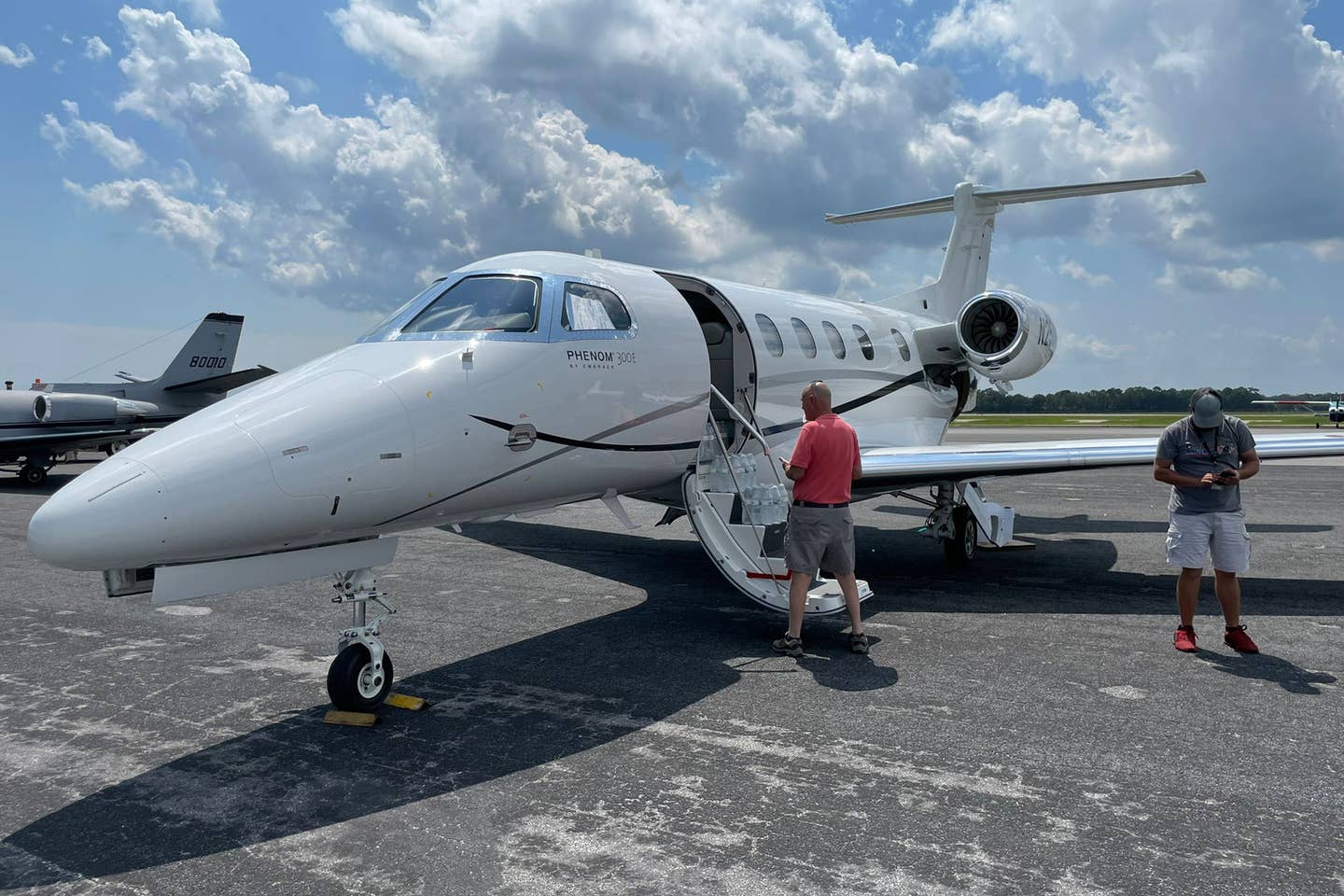
A wide range of aircraft operated by volunteer pilots delivered supplies through the weekend to remote areas hit hard by Ida. Courtesy Brad Pierce/AeroBridge
“There were nails everywhere.”
That’s just one glimpse into why the aerial support delivered by charitable aviation groups such as AeroBridge remained critical throughout the week after Hurricane Ida swept through the Gulf Coast.
In total, AeroBridge flew more than 90,000 pounds of materials and supplies over the course of 90 missions—everything from food and water to life-saving insulin.
In an interview over Labor Day weekend with Flying, pilot Brad Pierce recounted the hours he’d used his Cirrus SR22T flying back and forth from the organization’s staging airport at Pensacola International (KPNS) to airports and Louisiana, focusing their efforts on those places hit hardest.
“Going into Houma (KHUM) for our most recent assessment, [we saw] they are getting back up—Target is open, Lowe’s is open, they are getting stuff in,” Pierce said. “So now we’re really focused on Galliano (KGAO) in the far southern tip of Louisiana, where resources are lagging behind.
“They’re more remote, isolated, less accessible, more logistically challenging. Some road infrastructure held, but our associated folks on the ground reported continued difficulty—you need four or five tires to drive down here… [you’d get] flat tires every mile because of all of the nails and debris on the roads.”
Those images drive home the utility of general aviation in getting supplies in, even with a path open on the ground.
Survey from the Air
Pierce had just returned to Pensacola after making a series of relatively low-level passes at 1,000 feet agl, criss-crossing the severely impacted area. Though relief agencies were on the ground elsewhere, he said, “We did not see one relief or emergency or national guard vehicle…we flew back and forth to survey it all.” The ground vehicles just couldn’t get there yet.
He’s conducted relief flights over the course of 20 years—including support following Hurricane Dorian in September 2019—and he knows the media can sensationalize the depth of the problems. Therefore, it’s important for pilots to make an objective assessment.
“We like to get our own eyes on things; it’s not a sightseeing trip,” Pierce said. “If we see FEMA trucks, we stand down”—but there was zero happening in Galliano when they made their survey. So, they loaded up what they could and brought it into the South Lafourche Leonard Miller Jr. Airport.
“People in this parrish are in a bad, bad situation,” Pierce continued. “Our relief has not been redundant. We are not looking for an excuse to fly our airplanes—I get plenty of hours—we don’t launch airplanes and burn fuel just to feel good.”
Pierce typically flies up to 600 hours each year in the course of his business, which includes installing commercial kitchens at military bases. He appreciates everything the military does in supplying disaster relief in these times.
“When we see the C-130s come in, we know official help has arrived.”
He has been buoyed by the support coming from other quarters as well.
“The Pensacola Tower controllers showed up yesterday at the FBO. They said, ‘We need to talk with you…all of us got together and filled up a van full of supplies to load into airplanes. Now we’re a part of this thing too.’”
How to Help
“We’ve had more than 200 pilots sign up this last week alone,” said Pierce, noting that the National Air Transport Association issued a joint press release with AeroBridge, highlighting the group’s efforts.
But the need continues, he said.
“When the skies turn dark, we run towards the darkness. We deliver life sustainment, and then we fade quietly into the background until the next disaster comes.”
Pilots can sign up to support AeroBridge by going to the organization’s site.

Sign-up for newsletters & special offers!
Get the latest FLYING stories & special offers delivered directly to your inbox






